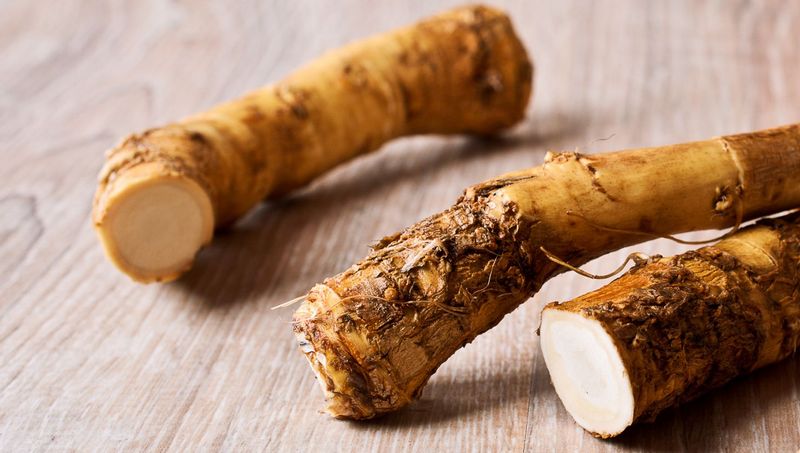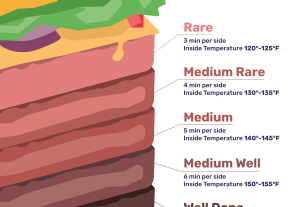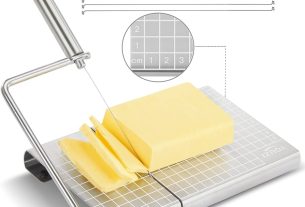We all know horseradish to be taken as a kind of creamy sauce. However, horseradish is its root vegetable just like ginger and turmeric used in making a delicious sauce. What we want you to know is that horseradish is a plant on its own.
The thing about horseradish is that a little goes a very long way. This means that whenever you make horseradish sauce for yourself or perhaps use it for something, there is a likelihood that there will be some extra horseradish you will have as leftovers. The bone of contention is what you will do with the leftovers.
You are likely to be prompted to ask the question of whether or not horseradish can be stored inside the freezer. You are allowed to freeze your horseradish and we have several ways you can go about it. You are recommended to freeze it grated instead of as a whole because it will be frozen better that way.
What we want to check out in this article is to find out everything you need to know about how horseradish can be stored inside the freezer. You need to continue reading to get everything we have in place for you concerning freezing your horseradish.
The Complete Guide to Freezing Horseradish
A perennial flowering plant produces horseradish with the part of the plant usually used inside the kitchen being the root of the particular plant. Usually, horseradish is used as a sauce and a condiment or a spice for your cooking. Horseradish primarily originated from parts of Asia and Europe where it was used. However, it has become a plant that is now being used across the globe.
The most popularly used portion of this plant is the root. Whenever you cut your horseradish, you will likely have a reaction that comes with the experience of cutting onions. Horseradish could make you cry, but the cry is worth it.
People now consider horseradish to be classified as part of garden vegetables. It has, however, been considered to be used for several medicinal purposes. The reputation of horseradish is known to have a little kick. It is not spicy overwhelmingly but it has some bite that catches attention.
Most times, people purchase already prepared horseradish because it has a pungent odor which usually fills their senses when they try to use it. The root can be dried or turned into a powdered form or it can be grated fresh. When you want to consider horseradish sauce, it is usually made using horseradish by adding salt and vinegar.
Using Horseradish
You will get the best of flavors when you use your horseradish fresh. The potency usually degrades heavily once it is diluted or mixed with other substances. It does not mean it is not good, but it might just not be good enough. You might not notice any difference unless there is a well-seasoned palate where you use horseradish for all, the bite we all know horseradish for will still be evident.
Once you have cut your horseradish, you will want to quickly use it because it starts to deteriorate quickly. You are allowed to use horseradish to help spice up many of your dishes, we will show you some of them. Please check below:
- Put in breakfast casseroles or scrambled eggs.
- Add to hummus or guacamole.
- Put inside coleslaw.
- Use a kick for making a dressing.
- Use your horseradish sauce to represent a condiment
- Potato dishes.
- Macaroni salad
- Potato salad
- Deviled eggs
- Add it to mustard
- Add it to mayonnaise.
The ideas we highlighted above are only a few ways you can use horseradish, there are several other ways you can use it. In any of those ways, Horseradish sauce or grated horseradish can be used. Ensure you get your vinegar in immediately you cut or grate into the horseradish. The vinegar will help you to preserve or keep the plant’s character intact and help to prevent the horseradish from being degraded.
Health Benefits of Horseradish
There are several health benefits associated with horseradish because it is considered to be a root vegetable plant. Because people do not highly commercialize horseradish as food, you are likely to be unaware of their health benefits. Check below for some health benefits associated with horseradish:
- It helps to prevent and reduce toothaches.
- It helps to stimulate appetite for people who do not have an appetite.
- It can work well as a treatment for diuretic, to treat edema and kidney stones.
- There are antibiotic properties naturally found within horseradish’s root that help to kill bacteria of the throat and clear UTIs.
- It contains high vitamin C content.
- Horseradish helps to increase resistance to cancer through glucosinolates, a compound that has detoxification properties.
- It helps to reduce congestion and mucus and helps to clear sinuses.
Making Horseradish Sauce
Usually, horseradish is most commonly used for horseradish sauce. You are likely to either dry your horseradish first or use it to make a sauce if you want to use any of the ideas to use horseradish we have listed above. What we want to do is to show you a quick process you can use to make your horseradish sauce recipe, we will not check out a whole recipe that you can use to make horseradish sauce.
Your everyday horseradish sauce is made of salt, horseradish, and vinegar. There are times beets juice or beets are added into the sauce to help spruce the color. A more common type of horseradish sauce you will see out there is a creamy horseradish sauce. All you need to do to achieve this is to add mayonnaise and sour cream to the mixture so that it will be creamy and smooth.
You can use this version of horseradish sauce like your dip, or as an addition to meals like potato salads and deviled eggs. It fits correctly into your mix because the horseradish is creamy with the flavor being the noticeable thing.
How to Freeze Horseradish
This is the stage we have been waiting for since the beginning of the article. Having read what we have already discussed, you should now be very familiar with horseradish, what it is used for, and how you can use it. You should have also known that you cannot classify horseradish as a sauce until it is made so.
We want to check out how you can freeze your horseradish and you must know that we are referring to horseradish in its root form. Horseradish sauce can be frozen or even canned (depends on if it is creamy or not) but we will not be checking this out in this article. Check out the step by step instructions on how you can freeze your horseradish below:
- Leave the horseradish root unwashed and uncut inside a bag and place it into a vegetable drawer of the fridge if you will not use it within 1 or 2 weeks.
- It is possible to freeze the horseradish whole but it is recommended to freeze it grated if you want to have the best outcome.
- You are recommended to separate the grated portion into smaller portions so that you will only use the portion you need per time. Work with it quickly or preserve it by soaking it inside vinegar. You may skip the step involving vinegar if you want to freeze it whole. Ensure you drain the vinegar before you freeze.
- Use foil to wrap horseradish.
- Put the wrapped horseradish into a heavy-duty freezable bag or an air-tight container.
- You can then put the label and date before you seal the package.
- The horseradish can then be placed inside your freezer for about six months.
Once you want to use the horseradish, you can use it frozen by putting it into your dish. It is very easy to grate your horseradish if you will need to do that. However, you could find it a bit harder for you to peel your horseradish from here. You don’t have to be concerned about any defrosting or thawing tips or tactics.
You should, however, not defrost it and then place it inside the freezer to refreeze. This is the reason why it is recommended to grate and then separate it into different portions. In case you have frozen it whole, cut the portion that you need quickly and return the remainder into the freezer.

Related Questions
Can You Use Horseradish Skin?
We do not recommend you to use horseradish skin. People consider it safe, but there are several allergic reactions directly associated with it. It is best when you peel it like you usually do to a potato.
Is Horseradish Hot When it is Whole?
A compound called isothiocyanate is contained in horseradish. This compound is usually provoked when horseradish is exposed to air. When you grate or cut it, the oxygen activates the heat.
How Can You Tell if Horseradish is Bad?
Whenever you notice that your horseradish has turned mushy or dark, it has likely become bad. All you need to do is to throw it away. It is same for prepared, whole, as well as grated horseradish.


